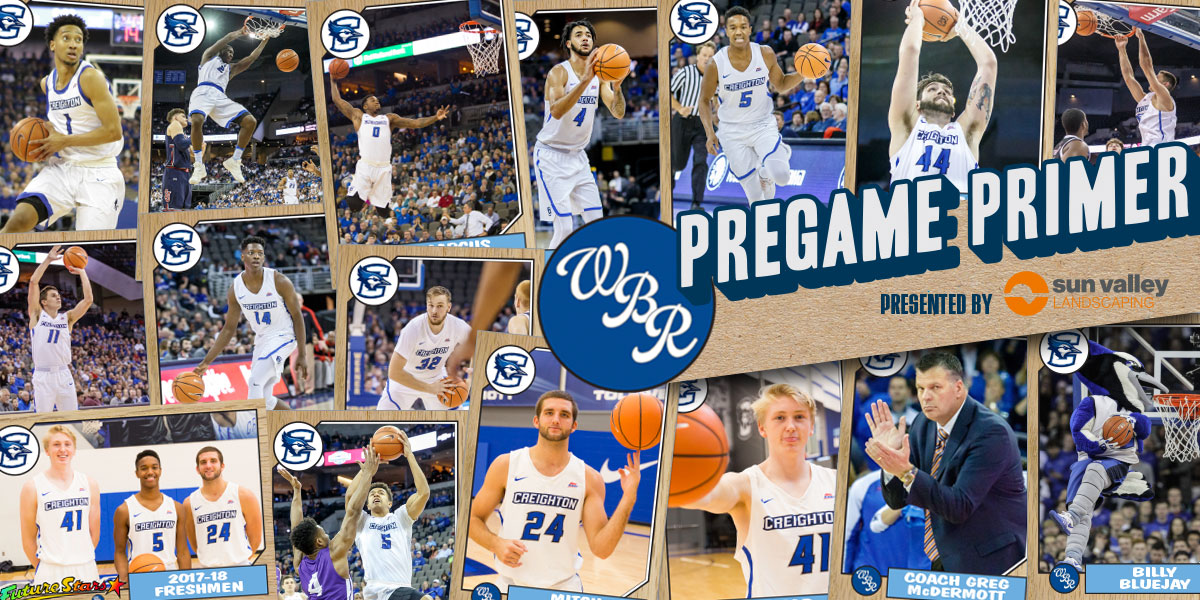[dropcap]Creighton[/dropcap] opens up the 2018 NCAA Tournament against Kansas State on Friday, in the first game of the evening television window. The two schools are separated by just 160 miles, but haven’t met on the hardwood in over 30 years, due in large part to Dana Altman being the Bluejays’ coach for nearly 20 of those seasons after leaving Kansas State (and not wishing to play his old school). Despite that lack of familiarity, the Wildcats will look oddly, well, familiar to Jays fans.
They’re coached by Bruce Weber, and he’s assisted by (among others) Chris Lowery and Brad Korn. That trio of former Salukis have implemented a similar style of play at K-State to the one they used at Southern Illinois when they were the Jays’ MVC nemesis. Namely, they’re tough as nails, grind the tempo of the game to a halt, keep opponents from running in transition, and defend aggressively.
And much like those SIU teams, instead of crashing the offensive glass to create second-chance opportunities, they instead send their players back on defense to prevent their opponent from getting baskets in transition. K-State grabs an offensive rebound on just 26.2% of their missed shots, ranking in the bottom-third of D1, and they have just 66 total shot attempts off of an offensive rebound all season — not made shots, ATTEMPTS. That’s right: just 66 of their 1,811 shots, or 3.6%, have been second chances.
Defensively, they slow the game down two ways. One, by sending their players back on nearly every shot attempt, they make it impossible to get advantageous numbers in transition. And two, they aggressively guard the ball, which manifests itself in a lot of blocked shots (7.1% of opponent’s shots, ranking 33rd best in D1), lots of steals (8.3% of opponent’s possessions end in a steal, 136th best), and lots of turnovers (21.4% of opponent’s possessions end in a turnover, 25th best).
Meanwhile on offense, they take their time. They take nearly as many shots (312) with five seconds or fewer left on the shot clock as they take in transition (337). Just 28% of their shot attempts come in the first 10 seconds of a possession.
As a result, their adjusted tempo is 65.5, nearly three possessions slower than the D1 average, ranking 302nd nationally (out of 351 teams). They force opponents to use 18.3 seconds per possession before shooting, ranking 322nd (or, taken the other way, only 29 teams force opponents to take longer before shooting).
Individually, they’re led by 6’10”, 230-pound center Dean Wade, who averages 16.7 points and 6.4 rebounds a game (both team highs). Wade is precisely the type of player Creighton has struggled to defend this year — a big, skilled post player who can both score in the paint and step out to hit three-pointers.
To be fair, Wade shoots from everywhere, which makes him difficult for anyone to guard. 30% of his shots come at the rim, where he shoots 73.3% — if you let him catch the ball on the block, he’s almost automatic. That has to concern Greg McDermott and his staff. Also concerning? 50% of Wade’s shot attempts are two-point jumpers, which he makes 49.4% of the time. Not only can he abuse opponents in the paint, he’s comfortable stepping back for a mid-range jumper, which increases the real estate that you have to guard him. Add in the fact that the other 25% of his shots are three-pointers, which he makes 44% of, and you’ve got a headache.
However, it’s worth noting that Wade missed the Big XII Semifinal against Kansas with a foot injury suffered the day before against TCU. He was spotted Wednesday night in Charlotte with a walking boot on that foot, and though everyone believes he’ll play Friday, how much of his game will be limited by that foot injury? That’s a huge storyline, because a fully healthy Wade at 100% of his abilities will be difficult for the Bluejays to handle.
***Update: March 15 (4:45pm Central)
WBR’s Matt DeMarinis is in Charlotte with the Jays, and reported Thursday afternoon that Wade participated in the Wildcats’ open practice but didn’t do much:
Weber told the media that as of right now, he’d peg the odds of Wade playing at around 60%.
***
Their second-leading scorer is Barry Brown, Jr. who averages 16.6 points, 3.5 assists and 3.1 rebounds a game. The 6’3″, 195-pound guard also missed most of the semifinal game with Kansas after being inadvertently poked in the eye. Brown’s the closest thing to a slasher that the Wildcats have, with 40% of his shots coming at the rim and over 80% of those created by himself off the dribble. He shoots 67.5% on those shots, but that drops by more than half if you can stop his dribble and force him to take a jumper — 30% of his shots are of that variety, and he makes just 31.6% of them. The same is true from behind the perimeter; he’s a 33.1% shooter from long range.
Keeping Brown from getting downhill and driving all the way to the basket is imperative. He’ll likely be matched up with two-time Big East Defensive Player of the Year Khyri Thomas, and if history tells us anything about opposing players getting their first taste of #Khyrifense, Brown is probably in for a very long and very frustrating day.
Third in scoring is a player Creighton recruited pretty heavily in Xavier Sneed, who averages 10.7 points and 4.8 rebounds a game. Sneed has taken a quarter of the Wildcats’ total three-pointers this year — 56.2% of his total shot attempts are threes — but like a lot of volume shooters from behind the arc, he’s really streaky, as he’s made 32.3% of them for the season. Sneed has had good nights (6-9 against West Virginia at home, 3-5 against Oklahoma, 5-10 at West Virginia) and bad nights (2-8 against Georgia, and 0-fors with multiple attempts against Baylor, Oklahoma State, Texas Tech, and Washington State).
6’9″, 225-pound Makol Mawien has started every game this year, but only averages around 18 minutes a game because he’s consistently in foul trouble. When he is on the floor, he’s their best shot blocker and most aggressive offensive rebounder, and averages 6.1 points and 3.3 rebounds a game. The problem has been getting him to defend without fouling, because when he plays, he’s been terrific on both ends of the floor. 95% of his shot attempts come inside the arc, so unlike Wade he isn’t a big man you have to chase around the perimeter, but you do have to respect mid-range game (he’s a better than 50% shooter on two-point jumpers).
Kamau Stokes, a 6’0″ junior guard, scores 9.7 points and averages nearly three assists a game. He’s platooned with Cartier Diarra, a 6’4″ redshirt freshman who averages 7.2 points, 2.1 rebounds and just under two assists a game. Diarra is the better shooter (65% on shots at the rim, 40.0% on threes) while Stokes is the better distributor (his 89 assists are second-most on the team), and they split time on the floor almost equally.
Beyond those core six, the K-State roster is a slew of role players led by Amaad Wainright and Levi Stockard III, who are the only two to see regular minutes. Neither is a big contributor statistically. Wainright’s attempted 70 shots all season, shooting 41% overall and 32% on threes, and averages 2.3 rebounds a game. Stockard, a 6’8″ 240-pound freshman, has been the primary backup for Wade and Mawien and averages just under two points and two boards a game in nine minutes of action.
Can Toby Hegner defend Dean Wade? And if not, is Jacob Epperson up to the challenge both strength and health wise? Can Manny Suarez give them 4-5 minutes if they can’t, or if they end up in foul trouble from trying? Contrary to what many Bluejay fans on Twitter seem to think, it’s not always a basketball decision when Epperson is on the bench instead of on the court; the health of his surgically repaired knee (and his conditioning) often makes the decision for the coaching staff.
Can the Bluejays make shots, and take care of the basketball, in a game likely to have fewer possessions than they’d prefer? The Jays were 6-23 from three-point range in their quarterfinal loss to Providence last Friday, missing several open looks they normally make. They got stagnant against a Friar defense doing it’s best to grind the game down. It sounds overly simplistic, but at the end of the day basketball is about scoring more than the other team, and Creighton’s going to have to shoot better than they did in NYC last week to win against K-State.
As it usually does for Creighton, the outcome of this game hinges largely on their shooters having a good day. Too often in the NCAA Tournament, they’ve gone cold — and as a result, too often Creighton’s gone home early. Some of the worst examples:
- 1999: Rodney Buford makes 11-38 from the field in two games (and 2-12 from three-point range), getting eliminated by Maryland in the second round
- 2000: Kyle Korver makes 2-10 from three point range; Korver and Ryan Sears, their top two shooters, combine to go 6-20 from behind the arc in a loss to Auburn
- 2001: Korver once again struggles, making 2-13 from three-point range; Korver, Sears and Terrell Taylor combine to shoot 5-25 from long range in a loss to Iowa
- 2002: Taylor (8-15) and Korver (4-9) shoot well from three-point range in a double-OT upset of Florida, but Taylor goes just 2-9 on threes in a loss to Illinois in the second round
- 2007: CU makes just 3-19 threes overall, with Dane Watts (0-8) and Nate Funk (1-5) misfiring consistently in a loss to Nevada
- 2013: A team-wide cold spell doomed them in a second-round loss to Duke, as they made just 2-19 on threes. Austin Chatman was 1-6, Doug McDermott was 1-4, and Jahenns Manigat was 0-4
- 2014: Another second-round bout of cold shooting, as they were 5-24 on threes in a loss to Baylor. McDermott was 0-3, Chatman was 1-4, and Manigat was 1-6
- 2017: Marcus Foster made 1-7 from three-point range, and the team was 7-23 overall, in a loss to Rhode Island
If we see a repeat of any of those types of shooting numbers, this will be a short trip.
Beyond the action on the court, subplots abound. Marcus Foster began his career at K-State and starred for Weber’s Wildcats for two years before being kicked off the team. Will he try to do too much, and try to beat them single-handedly for revenge? Foster’s growth as a senior has been a key development for the Bluejays’ success, and a reverting to the volume shooter he was at times as a junior is a concern.
Both of CU’s point guards, Davion Mintz and Ty-Shon Alexander, are from the Charlotte area and this weekend is a homecoming of sorts. It’s an old sports cliche that when players return home for a game, their individual performance tends to fall on one extreme or the other — they either have huge games as they show off for friends and family, or have terrible games as they try to do too much. Creighton can ill afford to have the latter from either player.
Mintz and Alexander aren’t the only Charlotte natives connected to the Bluejay program. Hall of Famer Paul Silas and former coach Tom Apke are from the area, and still live in North Carolina; both were at Thursday’s practice. You could do worse than taking rebounding tips from Silas.

- Tip: 5:50pm Central
- Venue: Spectrum Center, Charlotte, NC
- TV: TNT
- Announcers: Jim Nantz, Bill Raftery, and Grant Hill
- Sideline Reporter: Tracy Wolfson
- In Omaha: Cox channel 36 (SD), 1036 (HD); CenturyLink Prism channel 108 (SD), 1108 (HD)
- Satellite: DirecTV channel 245, Dish Network channel 138
- Streaming on MarchMadnessLive with authentication from a cable or satellite provider
- Creighton Radio: 1620AM
- Announcers: John Bishop and Nick Bahe
- Streaming NOT available (NCAA prohibits local feeds from streaming on the internet and mobile devices)
- National Radio: Westwood One Sports (Syndicated nationwide)
- Announcers: Kevin Kugler and Eric Montross
- Also available on Sirius channel 137 and XM channel 201
- Streamed on WestwoodOneSports.com and via the TuneIn app.
- For Cord Cutters:
- TNT is available on all major streaming providers; channel numbers vary
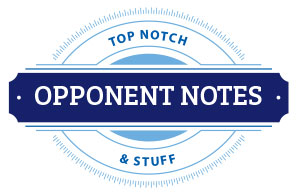
- In its last NCAA appearance, No. 11 seed K-State knocked off fellow No. 11 seed Wake Forest, 95-88, in the First Four last year before losing to No. 6 seed Cincinnati, 75-61. Seven current players saw action in one or both of those NCAA Tournament games, including starts in both contests by current juniors Barry Brown, Jr., Kamau Stokes and Dean Wade.
- In K-State’s 29 previous NCAA Tournament appearances, the Wildcats have advanced to the Sweet 16 a total of 16 times. The program has also reached the Elite Eight 11 times, made four Final Four appearances and played in one National Championship game (1951).
- Head coach Bruce Weber becomes fifth different coach to lead K-State to at least four NCAA Tournament appearances and joins Jack Hartman (1978-82), Lon Kruger (1986-90) and Frank Martin (2007-12) as the only coaches to accomplish it four times in a six-year period.
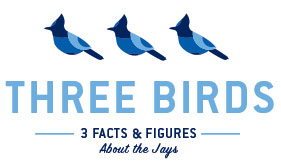
- Creighton is making its 21st NCAA Tournament appearance, and 12th in the last 20 years. The Bluejays are 12-21 all-time in NCAA action, including a 9-11 record in its first game.
- Nine players on the Creighton team have been a part of an NCAA Tournament squad before, and eight of them have appeared for the Bluejays in the Big Dance. That includes three guards who started in last year’s NCAA Tournament game vs. Rhode Island, Marcus Foster, Davion Mintz and Khyri Thomas. Foster also played for Kansas State in the 2014 NCAA Tournament, where he had 15 points and five assists in 39 minutes of a loss against Kentucky.
- In addition to Creighton’s current roster, there’s at least seven others with ties to the program who are involved in this year’s NCAA Tournament. Loyola (Chicago) head coach Porter Moser played at Creighton from 1986-90, appearing in the 1989 NCAA Tournament with the Bluejays. Texas A&M head coach Billy Kennedy is a former Creighton assistant coach from 1991-93. South Dakota State assistant coach Ben Walker played at Creighton from 1997-2001, appearing in three NCAA Tournaments. Former Creighton video coordinator Tyler Glidden (2010-16) is also an assistant coach at South Dakota State. Former Creighton assistant coach Steve Lutz (2010-17) is now an assistant coach at Purdue. And former Bluejay Leon Gilmore III (2014-15) now plays at Stephen F. Austin.
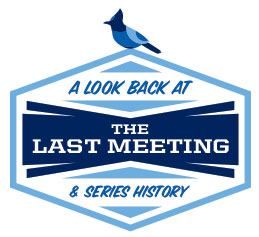
Creighton and Kansas State have met 15 times, with CU leading 8-7. They last met on December 5, 1987 when K-State won 88-78 at the Omaha Civic Auditorium. All 15 games have come in either Manhattan or Omaha — they’ve never played in the postseason or on a neutral floor.
That 1987 game in Omaha featured 31 points from the Wildcats’ Mitch Richmond, and a young, relatively unknown assistant on the K-State bench — Dana Altman. The visiting Wildcats took a 51-29 lead late in the first half before a Homecoming crowd of just under 6,000 at the Civic came to life and helped spark a humongous rally. Over a nearly 15-minute stretch spanning the final 90 seconds of the first half and most of the second, the Jays outscored them 37-15 to tie the game at 66.
At the tail end of their huge run, James Farr ripped away four steals in the span of three minutes, scoring or assisting on eight straight points. They got 21 points from both Farr and Rod Mason, and a double-double (12 points and 12 rebounds) from a young Bob Harstad.
But after tying the game at 66, the Jays couldn’t get over the hump. They turned it over three straight times. Freshman Chad Gallagher missed two free throws. And Richmond scored five straight as part of a 7-0 KSU run to put the game on ice.
The Bluejays have nearly as much history against Bruce Weber individually as they do against his current employer; they faced him 12 times while he was the head coach at Southern Illinois, and had a 5-7 record. The last Creighton/Weber battle was a memorable one:

WBR’s Matt DeMarinis is in Charlotte covering the tournament, and caught up with us last night for an episode of the Bluejays Bytes Podcast.
Marcus Foster matched up against his former team has been a big story this week. The Athletic ran a long-form feature on his story, and though you’ll need a subscription to read it, it’s one of the best things that’s been written about Foster’s journey, if not the best. Tremendous writing.
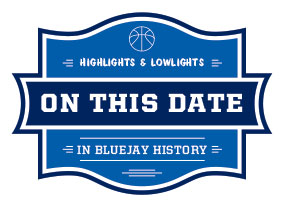
Oddly, Creighton has played five times in the NCAA Tournament on March 16, winning twice — against Alabama in 2012 and 16th-ranked Louisville in 1974.
- 1974: Creighton 80, #16 Louisville 71
- 1991: #13 Seton Hall 81, Creighton 69
- 2000: #24 Auburn 72, Creighton 69
- 2007: #15 Nevada 77, Creighton 71 (OT)
- 2012: Creighton 58, Alabama 57
Other than the Round of 32 loss to Seton Hall in ’91, the other two were extremely painful (Ben Walker’s would-be game-tying three at the buzzer clanging off the Minneapolis Metrodome rim at time expired against Auburn, Nevada’s OT triumph in 2007 to end the careers of Nate Funk, Anthony Tolliver and Nick Porter). The win over Louisville in ’74 came in the Consolation Game of the Midwest Regional following a loss to Kansas. So let’s look back at the other win.
In 2012, Greg McDermott’s Bluejays ended a decade-long NCAA Tournament winless drought with a dramatic 58-57 win over Alabama.
“With 12:31 to play and the score tied at 39, Josh Jones came up with a great steal at midcourt and raced to the rim for what many thought would be a momentum-swinging bucket. Instead, JaMychal Green raced alongside him and blocked his shot, the Jays didn’t take the lead, and moments later Alabama had built the lead back to seven at 48-41. I don’t know what you were thinking at that moment, but to me it seemed like a back-breaking sequence. To rally and tie the game, only to fall back behind by seven 90 seconds later? That’s tough.
Jones would have another chance (several, actually), with his first coming at the 6:59 mark. He drained a three-pointer to cut the deficit to 50-49, and after setting up Doug McDermott’s layup to give the Jays a 51-50 lead, he sank one of two free throws to extend the lead to two. A three from Jones with 2:44 to go made it 57-50, and it looked like #Legend was striking again.
“The thing about Josh, when he goes into the game, something’s going to happen,” Greg McDermott joked after the game. “Sometimes it’s going to be good and sometimes it might not be, but something is definitely going to happen.”
The final moments perfectly illustrated that. Gregory Echenique went to the line with 33 seconds left and the Jays up 57-55, but missed the front-end of a one-and-one. McDermott snared the rebound, was fouled, and made one of two at the line. Alabama sank a jumper to cut it to 58-57 with eight seconds left, and Jones was fouled. He missed both free throws.
Was this destined to be another in a long line of Creighton late-game heartbreaks in the NCAA Tournament?
In a word, no. As the teams huddled at their benches before the final possession, Greg McDermott was playing chess and Alabama’s coach Anthony Grant was playing checkers. McDermott sent the Jays out showing man-to-man defense, and instructed his players to switch to a zone at the last possible second. When they did, it confused Alabama, who had called in a play to attack a man-to-man defense from the bench just before inbounding the ball.
Grant panicked, calling timeout to set up a play to attack the zone defense, but in doing so cost his team half of the 4 seconds they had to work with. The play they ran was familiar to the Jays. “We felt like we knew what play they were going to run from one of their earlier SEC games that we saw on the Internet, and thought we could cover it in the zone the best,” Greg McDermott commented afterward. “Josh Jones did a really good job of it. He got Releford’s right hand, and made him take a really tough shot.”
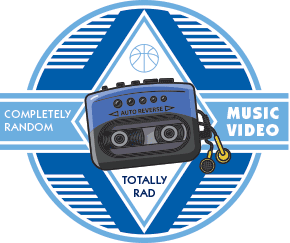
The only non-classical song I could think of that is long enough to last 3500 words is Iron Butterfly’s “In-A-Gadda-Da-Vida.” But since I (rightly?) assumed you didn’t want to listen to a three-minute drum solo roughly around the point where you were reading about Dean Wade’s shooting tendencies, I picked something else.
You’re welcome.
The Bottom Line:
If Creighton shoots relatively well, and figures out a way to stop Dean Wade from beating them single-handedly, I think they’ll advance to take on Virginia Sunday. But it’s going to be a nail-biter. Make sure the mini-fridge is well stocked.
Creighton 69, Kansas State 64

